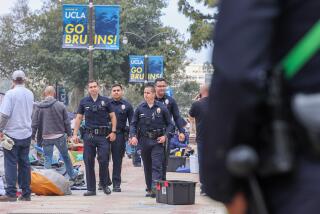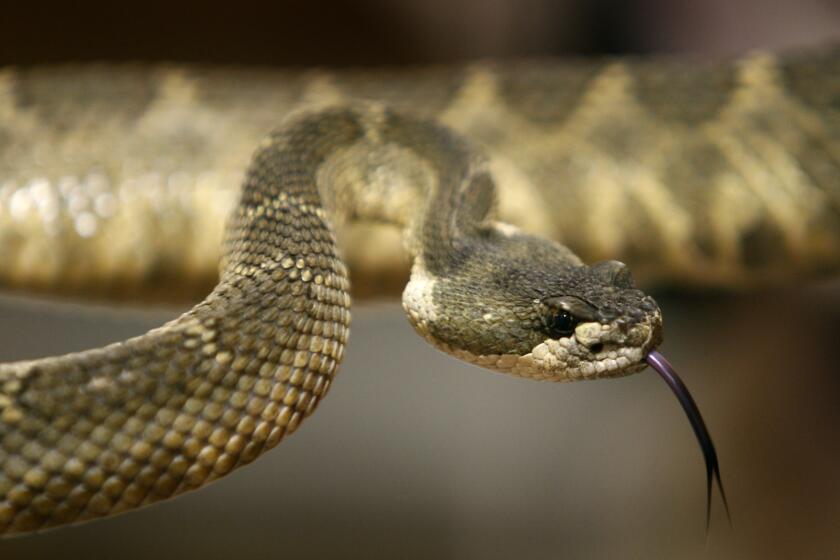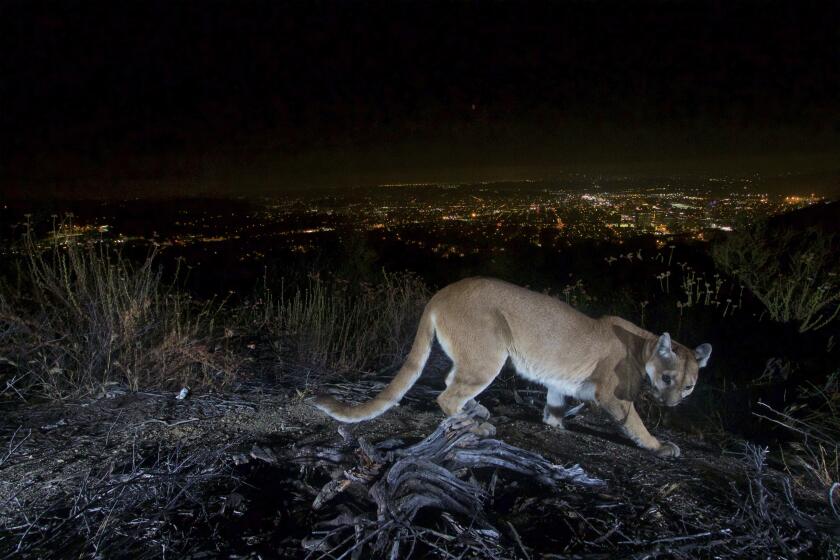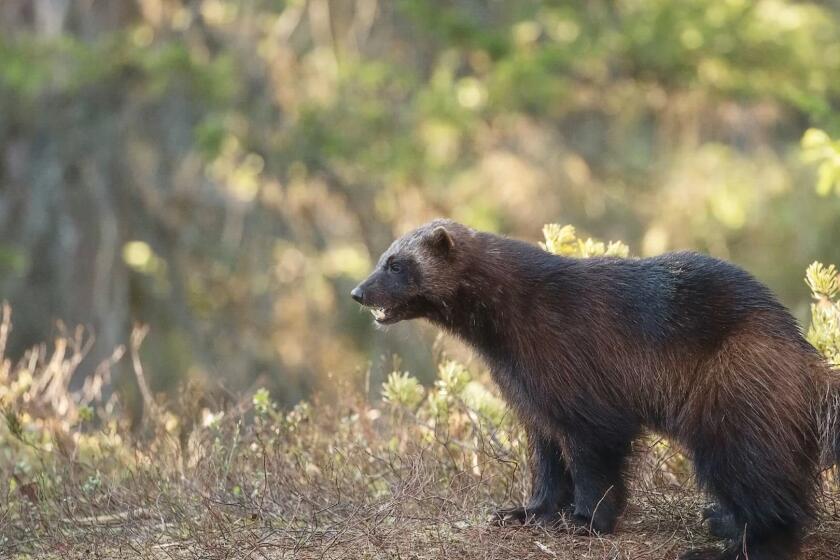Fliers to Put a Roof Over Beloved Birds : Aircraft: WWII-era warplane enthusiasts will build a museum and two hangars to house vintage planes at Camarillo Airport.
The last time Ken Kramer skinned his knuckles on the engine of a Bearcat fighter, he was on the rolling deck of an aircraft carrier plying the South Pacific as a Navy crew chief nearly 50 years ago.
With wrench in hand, Kramer finds himself again reaching into the recesses of the massive 2,200-horsepower aircraft engine designed to launch the Bearcat off a carrier’s deck with enough velocity to intercept incoming kamikaze fighter pilots.
“She had a habit of skinning my knuckles back then and she’s doing it again today,” said Kramer, a Thousand Oaks resident peering into the nose of a spit-polished and perfectly restored Grumman F8F-2 Bearcat in a Camarillo Airport hangar.
As he did during the war, Kramer has resumed his duties as a Bearcat crew chief, only now with the Confederate Air Force wing in Camarillo. Wing members spent thousands of hours over the last 18 months to restore the Bearcat, which they believed to be one of only 13 such planes in existence.
About 200 aviators, mechanics and World War II enthusiasts are members of the Southern California wing of the Confederate Air Force, a nationwide nonprofit organization on a mission to preserve and fly WWII-era warplanes.
Based at the Camarillo Airport, formerly the Oxnard Air Force Base, the Southern California wing has a small but growing collection of warplanes in a dilapidated, three-sided hangar that barely covers the noses of the aircraft.
To better protect the planes, wing members are planning to begin building two new hangars and a museum adjacent to the runway this spring.
*
“It’s imperative to get these birds inside an enclosed hangar,” said Steve Barber, Confederate Air Force wing leader. “Over time, it’s really the only way we will be able to assure their survival.”
For now, the Bearcat, along with a hulking C-46 cargo plane and a B-25 bomber--known affectionately by its nickname, “Big Ole Brew”--sit out on the Tarmac exposed to the summer’s baking sun and winter rains.
“There’s really no way to accurately assess the value of some of these aircraft; it’s really a priceless collection,” Barber said.
Wing members say they are in a constant battle against time and the elements to preserve the aging warplanes that recall a time when the nation pulled together to join a fight against a common enemy. In not too many years, they point out, those who remember the era will no longer be alive to share their memories.
*
So far, the wing has raised more than $350,000 in private contributions toward building the museum and hangars that would allow the wing’s entire collection to fit comfortably indoors.
The project is estimated to cost more than $1 million, and wing members hope to secure a long-term, low-cost lease with the county airport for vacant land immediately behind the wing’s regional headquarters.
Groundbreaking on the first hangar is expected early next year. The two-story museum complex is planned to be built next and the second hangar after that. If all goes as planned, the entire complex should be completed by 1997, Barber said.
Although the wing members’ primary goal is to protect the aircraft, their next priority is to find a space for the thousands of articles from World War II that the chapter’s members have collected.
Inside the tight confines of what now is the chapter’s museum, every inch of space is plastered with posters urging civilians to make more aircraft or to buy war bonds. Elsewhere, airplane models, swords and other mementos from the period are on display.
“Our members literally have thousands of items that they’ve been saving since the war,” Barber said. “Once the museum is built, we will have the room to display them properly.”
Marshall MacKinen, the county’s airports administrator, said he supports the Confederate Air Force wing and its ambitious plans.
“I see the effort being a tremendous draw for the airport. Once built, it will attract big crowds,” MacKinen said. “It’s a marvelous idea. Personally, I’ve always been enamored with WWII aircraft. When you see the aircraft, you immediately start going down memory lane. It’s a real nostalgic thing.”
In the past 12 years, members of the Confederate Air Force’s Southern California wing have gained a national reputation for restoring aircraft, said Barbi Woods, a spokeswoman for the group’s national headquarters in Midland, Tex.
“They completed the restoration of the Bearcat in 18 months,” Woods said. “When they flew into our annual national air show last October, the crowd just swarmed over the aircraft. This is a wing that’s been on the forefront of our restoration efforts.”
Woods said the Confederate Air Force now has more than 90 chapters throughout the world, with 137 aircraft and more than 7,500 members.
*
For Ed Thomas, 68, who was a nose gunner in a B-24 Liberator during the war, seeing the old war birds roar to life is still a thrilling experience.
“The war was a long time ago, but many of the memories are still very vivid,” said Thomas, who is retired and living in Ventura. “I remember being scared to death. I remember the exhilaration of a successful mission. It was an experience I’ll always remember.”
But the group’s aircraft restoration efforts are only a means to an end, Barber said.
“There’s plenty of challenge in making these birds fly again, but we’re doing this to preserve history,” Barber said. “We think that it’s important for people, especially the kids, to hear the engines roar and see them actually fly.”
More to Read
Start your day right
Sign up for Essential California for news, features and recommendations from the L.A. Times and beyond in your inbox six days a week.
You may occasionally receive promotional content from the Los Angeles Times.






